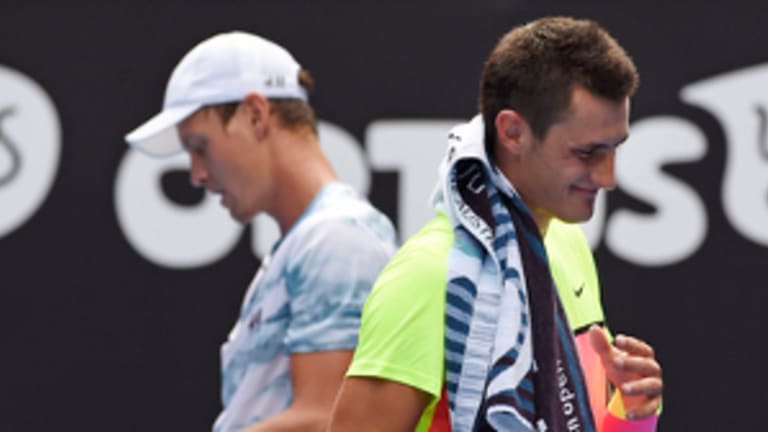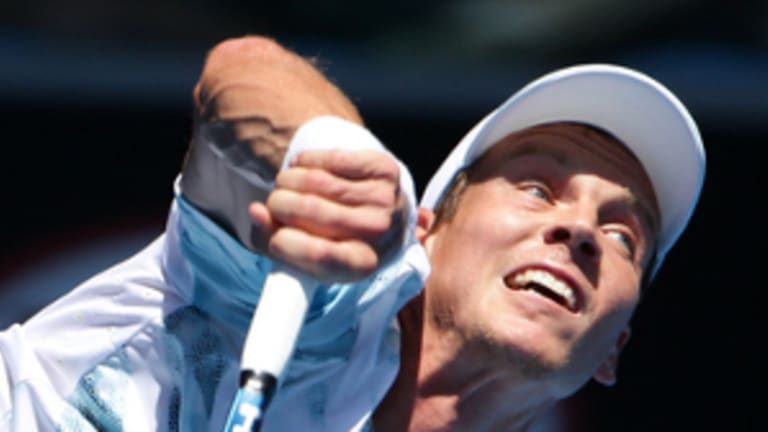“Oh yes, there’s a confidence in my game,” Tomas Berdych informed the media after his first-round win at the Australian Open. That’s how the 29-year-old Czech has been talking so far in 2015, and that’s how he has looked in Melbourne. It’s a time of radical change for Berdych, who, despite his clothes-free appearance in last year’s Body Issue of ESPN: The Magazine, has a conservative side when it comes to his career. Maybe it was the specter of the Big 3-0—if that’s still a thing—coming up later this year, but during the last two months he has hired a new coach, Dani Vallverdu, and proposed, successfully, to his girlfriend, Ester Satarova.
After five years with his old mentor, Tomas Krupa, Berdych seemed to believe his game had stagnated, and it’s hard to argue with that assessment. While his ranking, which has bounced wildly between No. 6 and No. 7 since 2010, didn’t suffer much in 2014, he went through an uncharacteristic mid-season slump. He also watched as Stan Wawrinka, who had spent most of his career in the Berd's rearview mirror, won the Aussie Open, and 24-year-old Kei Nishikori became the first member of a new generation to pass him in the rankings. Late last season, Berdych retaliated by trying to hire his own supercoach, fellow Czech Ivan Lendl. When Lendl passed on the idea, Berdych settled on Andy Murray’s old friend and day-to-day adviser, Dani Vallverdu.
This may end up being the better choice; even when Lendl worked with Murray, it was Vallverdu who did the lion’s share of the scouting and strategizing. But Berdych’s rejection by his own countryman seemed characteristic: Over the last 10 years, the Berd, as high as he has flown, has never been the word. I still wince when thinking about the tweet he sent out in 2013 after he had been eliminated, for the third time in four years, before the semifinals of the ATP’s World Tour Finals. Berdych commemorated the moment by posting a photo of a London exit sign. The message, even if subliminal, seemed clear: It was time for the tour’s stars to shine, and for Berdych to leave the stage.

